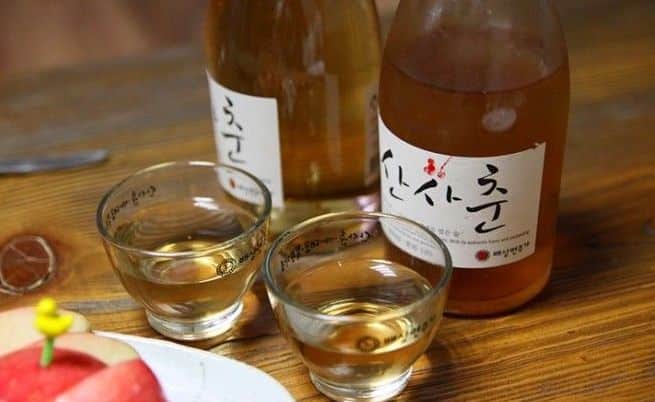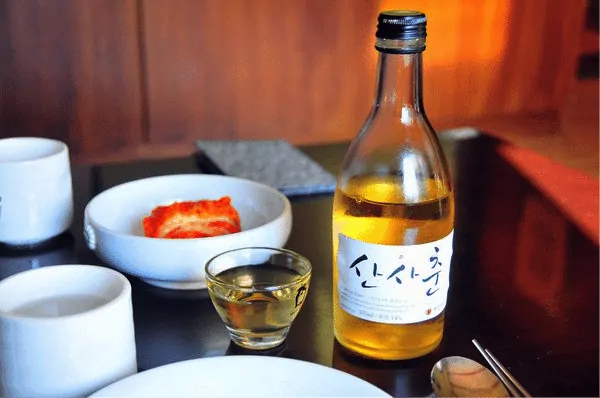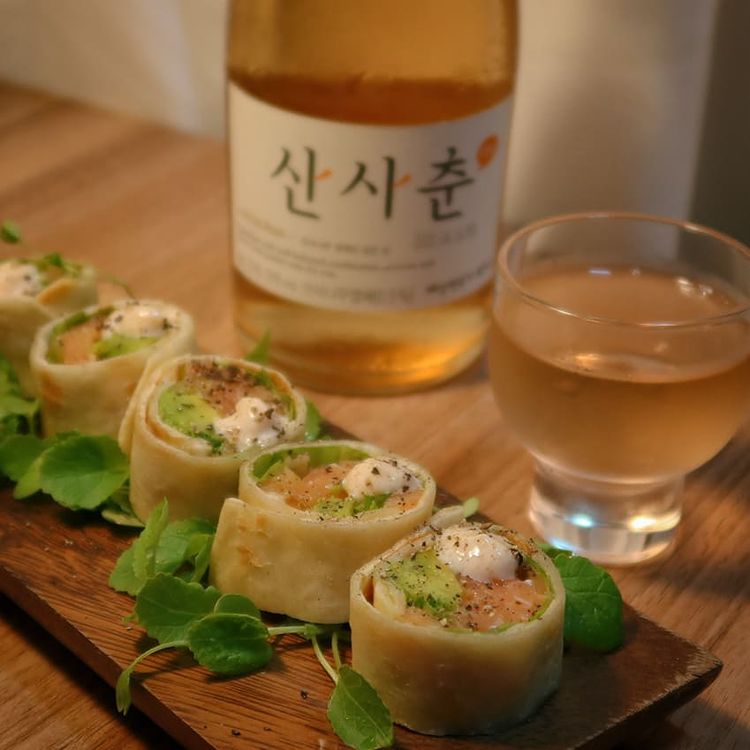Physical Address
304 North Cardinal St.
Dorchester Center, MA 02124
Physical Address
304 North Cardinal St.
Dorchester Center, MA 02124

Sansachun is a Korean rice wine flavoured with hawthornberry and cornus fruits. A flowering shrub or tree of the rose family. Sansachun rice wine has has been enjoyed all over East Asia for centuries and has been mentioned in numerous historical sources from the Joeson Dynasty’s later years and thought to be more than 400 years old.
Sansachun has a distinctive, aromatic flavor that does not cause discomfort when drinking. This is created by the method of fermenting raw rice with low-temperature fermentation. Hawthorn fruit is used to produce many medicines and is an effective remedy for stomach, intestinal and digestive disorders so sansachun is considered a yakju or medicinal liquor.
This fruit is very popularly used for the treatment of angina, heart failure, congestive heart failure, arrhythmia, and high blood pressure. The refreshing taste of sansachun will surely calm your nerves with its therapeutic effects.

Hawthorn berries
Intestinal problems, dyspepsia, and stomachaches can all be effectively treated with hawthorn. It is frequently used to treat excessive blood pressure, angina, congestive heart failure, and cardiac arrhythmia. Many medications still have medicinal uses for this type of berry.
Fruits of the Cornus
Cornus Fruit help the body regain its equilibrium by providing nutrition for the skin, enhancing blood circulation, and restoring balance to the body. Numerous skincare products also contain cornus fruits.

This rice wine has a low alcohol content, typically around 14% ABV, meaning it is commonly enjoyed as a pre-dinner drink or paired with traditional Korean dishes, especially stews or meat dishes.
Sansachun is usually served neat, in shot glasses. The drink allegedly has a centuries-old tradition, and it was initially enjoyed as a medicinal drink with a calming, therapeutical effect. In the 1990s, it was rebranded and promoted as a healthy and tasty sipping drink.

Even though trade and globalisation have brought rice wine to many other nations, the majority of study into its properties and health advantages is still done in the areas where it was first produced. Additionally, the findings are not frequently published in foreign publications, which may limit access to correct information regarding rice wine and its physiological consequences.
The alcohol content of rice wine is higher than that of beer and traditional wine (produced from grapes or other fruits). It can have an alcohol concentration between 18% and 25%. Beer ranges from 4% to 8% alcohol, while ordinary wine often includes 10% to 20% alcohol. It follows that it would be reasonable to suppose that consuming excessive amounts of this wine, or any other alcoholic beverage for that matter, would not be good for the body.
Furthermore, due to rice wine’s increased alcohol concentration, common alcohol side effects including nausea, blurred vision, loss of balance, loss of muscle coordination, and a hangover may manifest quicker than with a comparable amount of a drink with a lower alcohol content.
It is not unexpected that rice wine contains a variety of lactic acid bacteria (LAB), which are sometimes thought of as probiotics, given that it is a fermented beverage. 17 LABs that are present in traditional Korean wine were studied and their probiotic potential was evaluated by a multidisciplinary group of Korean experts.
An organism must be able to withstand low stomach pH, bile acids, and be able to stick to the intestines in order to be deemed a “good” probiotic. One particular LAB strain in rice wine was found by researchers to be more resistant than others (Park et al., 2015). Their discoveries might aid the food business in producing beverages of higher calibre and genuine probiotic value.
Interested in trying sansachun? Check out our article on the best bars in Seoul for locations on some of the best places to try this wonderful Korean alcoholic beverage.